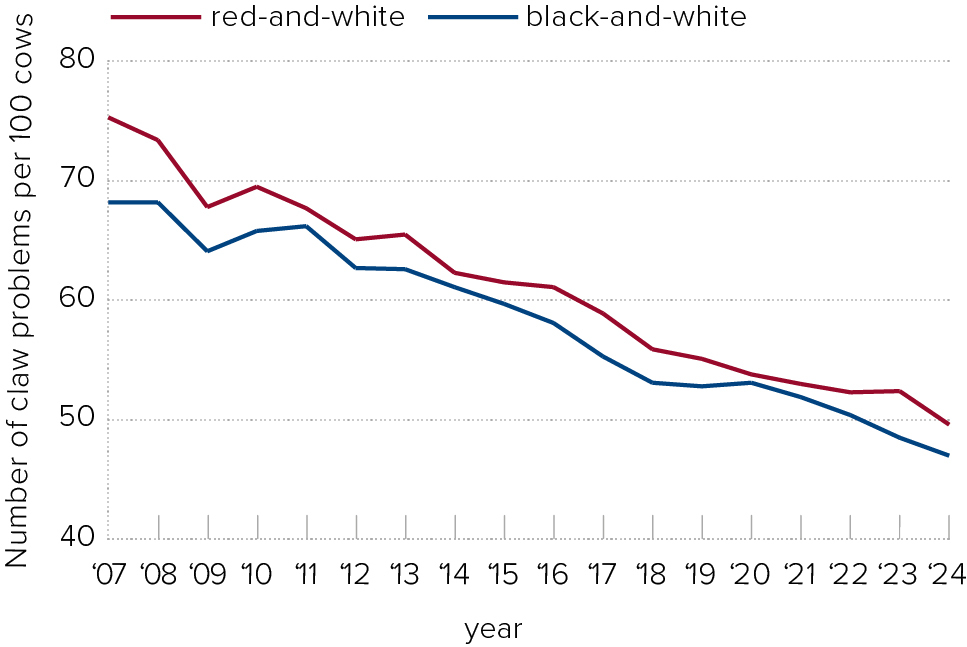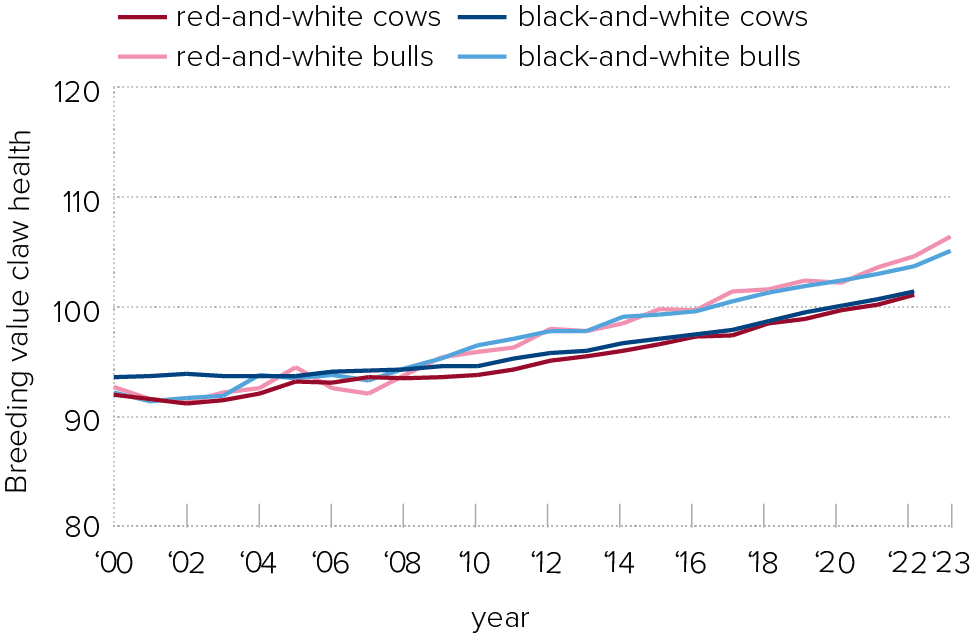“A cow with healthy hooves produces more milk, gets pregnant faster with fewer inseminations, and is less prone to other health issues. Healthy hooves collect the feed and deliver the milk,” says René Bos, herd management specialist at CRV. In 2023, farmers recorded a hoof or leg disorder as the reason for culling in 19% of culled cows. “Working on better hoof health is worth the effort,” Bos emphasizes. He also refers to the increasing attention hoof health receives in dairy sustainability programs. Hoof problems are a major source of frustration and cost for dairy farmers. They result in direct expenses for treating lame cows and, more importantly, in indirect costs due to lost productivity. The hoof health of Dutch and Flemish herds has improved over recent years. Since 2007, the number of hoof disorders has dropped by 30%. Breeding has played a significant role in this improvement. DigiKlauw provides insights. Understanding hoof health is crucial for taking targeted action. To document hoof disorders, CRV, in partnership with Royal GD, created the DigiKlauw program. This online tool allows hoof trimmers and farmers to easily record hoof conditions during trimming sessions. “DigiKlauw reveals which disorders are causing problems within a herd. For example, if many sole hemorrhages are reported, it requires a different approach than when infectious issues like digital dermatitis (mortellaro) are the main concern,” explains Bos. Consistent recording also reveals trends in hoof health on a farm, showing whether implemented measures are effective. Besides providing valuable data at the herd level, DigiKlauw also flags individual cows needing aftercare.
Step by step - breeding for healthy hooves

Hoof problems are a major source of frustration and cost for dairy farmers. They result in direct expenses for treating lame cows and, more importantly, in indirect costs due to lost productivity.

30% fewer hoof problems since 2007
Hoof health has significantly improved on farms using DigiKlauw. Figure 1 shows a decline in registered hoof issues from about 70 per 100 cows in 2007 to fewer than 50 in 2024, a drop of over 30%. Note: a cow has four hooves and is trimmed multiple times a year. So, 50 cases per 100 cows does not mean half of the cows have hoof problems. This decrease reflects the combined effects of breeding and management. It proves that focused attention yields results.

Half of Holstein bulls score 108 or higher
CRV uses DigiKlauw data to estimate hoof health breeding values. “Farmers who consistently consider this trait in sire selection are genetically securing better hoof health in their herds,” says Bos. Resistance to hoof disorders is significantly heritable. Table 1 in the article shows how daughters of bulls with higher hoof health breeding values have fewer problems. For example, daughters of Delta Jigger experience 35% fewer hoof issues than average. “Breeding for hoof health is achievable without compromising other important traits,” says Bos. Over a quarter of red Holstein and more than half of black-and-white Holstein bulls in CRV’s webshop have a hoof health index of 108 or higher.
Higher reliability with genomic selection
Farmers can take an extra step by using genomic breeding values for hoof health. “For young animals, the genomic reliability is around 70%, while traditional expected values offer only about 40%,” Bos explains. When hoof health is included as a trait in CRV’s SireMatch, it automatically carries more weight in mating and selection decisions.“That’s how you embed high genetic resistance to hoof problems in your herd, step by step and generation by generation,” says Bos.
Breeding reduced hoof problems by one-fifth
Genetic resistance to hoof issues has improved markedly since 2000, according to the Animal Evaluation Unit (AEU) of CRV. Figure 2 shows genetic trends:
• The average hoof health index for black-and-white cows rose from 93,6 (born in 2000) to 101,4 (born in 2022), a gain of 7.8 points
• For red Holsteins, the gain was 9.1 points. Each index point corresponds to 1,6% fewer hoof disorders, meaning a genetic reduction of:
• Nearly 20% in black-and-white cows
• Nearly 23% in red Holsteins

